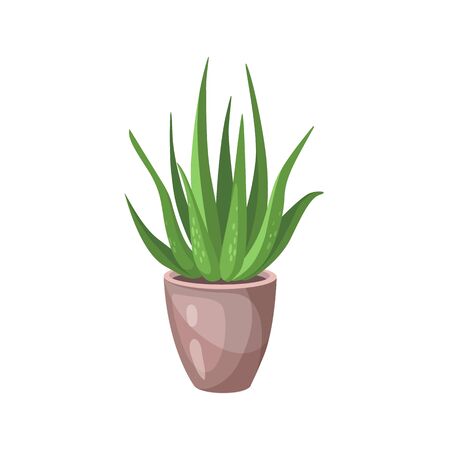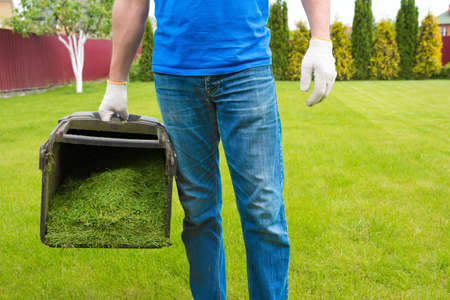Understanding Your British Lawn
When embarking on a comprehensive lawn care maintenance routine in the UK, it is essential to begin with a clear understanding of your British lawn’s unique characteristics. Lawns across Britain are typically composed of cool-season grass varieties such as perennial ryegrass, fescue, and bentgrass. These species are favoured for their resilience, fine texture, and ability to thrive in the often temperate and moist British climate.
Typical Grass Types in the UK
Perennial ryegrass stands out as a popular choice due to its quick establishment and hard-wearing nature, making it ideal for both ornamental and family lawns. Fescue grasses, including creeping red and chewings fescue, offer shade tolerance and drought resistance, while bentgrasses provide a luxurious finish for formal lawns but require more precise maintenance.
Soil Conditions Across Britain
The performance of any lawn is intrinsically linked to soil type. In the UK, soils range from heavy clays to light sandy loams. Clay soils hold nutrients well but can become waterlogged, whereas sandy soils drain quickly but may struggle to retain moisture during dry spells. Understanding your garden’s soil composition allows for tailored fertilisation and irrigation strategies throughout the year.
The Impact of the UK Climate
The British climate presents both opportunities and challenges for lawn care. Frequent rainfall supports healthy growth but also increases susceptibility to moss and fungal diseases if drainage is poor. Mild winters generally prevent grass from becoming fully dormant; however, occasional cold snaps or extended wet periods can stress the turf. Therefore, recognising these climatic influences helps inform a proactive monthly maintenance schedule that aligns with seasonal changes, ensuring your lawn remains robust and visually appealing all year round.
Essential Lawn Care Tools and Products
To maintain a lush, healthy lawn throughout the year in the UK, having the right equipment and products is crucial. This section presents a comprehensive list of essential lawn care tools and recommended products suited for British gardens, considering climate and typical grass types.
Must-Have Lawn Care Tools
| Tool | Purpose | UK Recommendation |
|---|---|---|
| Lawn Mower | Regular grass cutting to maintain optimal height | Cylinder or rotary mower; consider electric models for small to medium lawns (e.g., Flymo or Bosch) |
| Grass Trimmer/Edger | Tidying edges and hard-to-reach areas | Cordless trimmers (e.g., Black+Decker) for flexibility around flowerbeds and paths |
| Rake | Removing leaves, moss, and debris; scarifying the lawn | Spring-tine rake for moss removal; plastic leaf rakes for autumn clean-up |
| Garden Fork or Aerator | Aerating soil to improve drainage and root health | Manual hollow-tine aerators are ideal for compacted British soils |
| Watering Can/Hose with Spray Attachment | Irrigating during dry spells, especially in summer months | Hozelock hose reels with adjustable spray guns are popular in the UK |
| Spreader | Even application of seed, fertiliser, or lawn feed | Hand-held or wheeled spreaders (e.g., Scotts EasyGreen Rotary Spreader) |
| Lawn Shears or Long-handled Edgers | Finishing touches on borders and corners for neatness | Draper or Spear & Jackson long-handled shears for ergonomic use |
Lawn Care Products Tailored for UK Conditions
| Product Type | Main Use | Recommended Brands/Notes (UK) |
|---|---|---|
| Lawn Feed/Fertiliser | Nourish grass for strong growth; seasonal formulas available (spring/summer/autumn) | Miracle-Gro, Westland SafeLawn – choose slow-release options for ease of maintenance |
| Lawn Seed/Overseeding Mixes | Patching bare spots or thickening existing turf; select blends suitable for shade/sun as needed | A1 Lawn, Johnsons Lawn Seed – look for ‘hard-wearing’ varieties common in the UK climate |
| Moss & Weed Control | Treat moss (especially prevalent in damp UK gardens) and broadleaf weeds | EverGreen Complete 4-in-1, Resolva Lawn Weedkiller – always follow local environmental guidelines |
| Lawn Top Dressing | Smooth out minor bumps and improve soil structure | Pro-Grow Organic Lawn Conditioner, Levington Topsoil – apply after aeration or overseeding |
Lawn Care Calendar Integration Tips
Selecting quality tools and products not only makes each monthly task more effective but also prolongs your equipment’s life. For example, investing in a reliable mower reduces maintenance time during peak growing months, while using a season-appropriate fertiliser ensures your lawn thrives through variable UK weather. Always store tools properly after use and check product labels for application timing to align with your monthly lawn care schedule.

3. Monthly Lawn Care Checklist
January – February: Winter Preparation
During the coldest months in the UK, lawn growth slows considerably. Focus on keeping your lawn clear of debris, leaves, and branches to prevent mould and disease. Avoid walking on frosty grass to reduce compaction and damage. This is also an ideal time to service your mower and check your garden tools in preparation for spring.
March – April: Spring Awakening
As temperatures rise, your lawn will begin to grow again. Start mowing with a high blade setting and gradually lower it as growth increases. Apply a spring lawn feed rich in nitrogen for vigorous growth. March is suitable for scarifying to remove thatch, while April is perfect for aerating heavy or compacted soil, ensuring better water penetration and root health.
May – June: Prime Growing Season
Mow regularly, ideally once a week, adjusting the height according to weather conditions. Feed your lawn with a balanced fertiliser to support lush green growth. Keep an eye out for weeds and moss—spot treat as needed or use a combined feed, weed and moss killer. Water deeply during dry spells, preferably early in the morning or late evening to minimise evaporation.
July – August: Summer Maintenance
Continue regular mowing but raise the cutting height slightly during hot periods to help retain moisture. Watering remains crucial—aim for a thorough soak rather than frequent light sprinklings. Check for signs of drought stress or pests such as chafer grubs. Lightly aerate if the soil becomes compacted from summer foot traffic.
September – October: Autumn Renovation
This is the best time to scarify heavily and aerate again, relieving compaction built up over summer. Apply an autumn fertiliser low in nitrogen but higher in potassium and phosphates to strengthen roots ahead of winter. Overseed any bare patches and continue mowing until growth ceases, gradually raising the cut height towards late October.
November – December: Preparing for Dormancy
Keep the lawn free from fallen leaves and avoid heavy usage when wet or frosty to prevent compaction and disease development. Store away hoses and garden tools for winter, making sure everything is clean and maintained ready for spring’s arrival.
4. Tackling Common Lawn Problems
Lawn maintenance in the British Isles comes with its unique set of challenges, from persistent moss and invasive weeds to bare patches and common lawn diseases. Addressing these issues promptly and effectively is crucial for a healthy, vibrant lawn year-round. Below is expert guidance tailored to the UK climate and soil conditions.
Moss Control
Moss thrives in damp, shaded, or poorly drained areas—conditions often found in British gardens. To minimise moss:
- Improve drainage: Aerate compacted soil regularly, especially after wet winters.
- Reduce shade: Prune back overhanging branches that block sunlight.
- Use iron sulphate-based moss killers: Apply in early spring or autumn for best results, following manufacturer’s instructions.
Weed Management
The most prevalent weeds in UK lawns include dandelions, clover, and plantains. Effective strategies include:
- Regular mowing: Prevents weeds from seeding.
- Manual removal: Uproot weeds with a hand fork, ensuring the whole root is removed.
- Selective herbicides: Use products suitable for lawns to avoid damaging grass; apply on a calm, dry day.
Bare Patch Repair
Bare or thin patches are common after heavy use or harsh weather. Repair these areas by:
- Raking out dead grass and debris.
- Loosening the soil to a depth of 2–3 cm.
- Sowing appropriate grass seed blend for your region (e.g., ryegrass for wear tolerance).
- Watering gently but thoroughly until new growth establishes.
Lawn Diseases: Identification & Solutions
| Disease | Common Signs | Recommended Action |
|---|---|---|
| Red Thread | Pale pink/red fungal threads across patches of lawn | Apply nitrogen-rich fertiliser; improve drainage; remove clippings during outbreaks |
| Fusarium Patch (Snow Mould) | Circular patches of yellow/brown grass with white/pink fungal growth in cool, wet conditions | Avoid excessive autumn fertilising; improve airflow; scarify affected areas in spring |
| Dollar Spot | Tiny silver-dollar sized spots that turn straw-coloured | Avoid watering late in the evening; increase potassium fertiliser; mow regularly at correct height |
Proactive Tips for British Lawns
- Regular inspection: Walk your lawn monthly to spot problems early.
- Tidy up debris: Remove fallen leaves and cuttings promptly to prevent disease harbouring.
- Adapt care by season: Adjust mowing height and frequency according to weather patterns typical in the UK.
Tackling these common problems with an informed, proactive approach ensures your British lawn remains lush and resilient throughout the year.
5. Eco-Friendly and Wildlife-Friendly Practices
Sustainable Lawn Care Suggestions
Adopting sustainable lawn care methods is essential for homeowners seeking to minimise their environmental footprint while keeping their garden looking its best throughout the year. Opt for organic or slow-release fertilisers and avoid over-application, which can leach into local waterways. Mow less frequently and keep your grass slightly longer (around 5-7cm) to encourage deeper roots and reduce water evaporation. Where possible, collect rainwater in water butts for irrigation, rather than relying on mains supply.
Supporting Local Wildlife
British gardens are vital habitats for a variety of wildlife, from pollinating insects to hedgehogs and birds. Allow a small area of your lawn to grow wild, creating a mini-meadow that attracts bees, butterflies, and other beneficial insects. Incorporate native wildflowers along borders or in dedicated patches to support pollinators. Consider leaving leaf piles or installing log piles at the edge of your lawn as shelter for hedgehogs and amphibians, especially during colder months.
Reducing Environmental Impact
Chemical pesticides and herbicides can harm both wildlife and the wider environment. Instead, use natural pest control methods such as introducing ladybirds or nematodes where appropriate, or hand-pulling weeds rather than spraying. Aerate your lawn annually to improve soil health and enhance water absorption, reducing runoff. Compost grass clippings and autumn leaves to enrich your soil naturally—this not only reduces green waste but also returns nutrients back into your garden ecosystem.
Practical Tips for Every Month
Integrate eco-friendly practices into your monthly lawn maintenance by adjusting mowing schedules according to seasonal growth patterns and weather conditions. Prioritise overseeding with native grass species in spring and autumn, which are more resilient and require fewer inputs. Regularly inspect your garden for signs of wildlife activity and adjust maintenance routines to avoid disturbing nests or habitats during breeding seasons. By blending these sustainable habits into your regular lawn care calendar, you contribute positively to both the local environment and Britain’s treasured biodiversity.
6. Frequently Asked Questions
Answers to Common Queries and Concerns of UK Homeowners on Lawn Care Maintenance
How often should I mow my lawn?
During the growing season (spring and summer), its best to mow your lawn once a week, or more frequently if growth is vigorous. In autumn, reduce mowing to every two weeks, and in winter, only mow if necessary on a dry day.
What’s the ideal height for UK lawns?
For most British gardens, keeping your grass at around 2.5–4cm is recommended. For ornamental lawns, you can go shorter, but avoid cutting too low as this can stress the grass and encourage weeds.
When and how should I feed my lawn?
Apply a spring fertiliser in March or April to promote healthy growth. Use an autumn feed from September to help strengthen roots before winter. Always follow the manufacturers guidance for application rates specific to UK climate conditions.
How do I control moss and weeds?
Moss thrives in damp, shaded areas. Rake out moss in spring and apply a moss killer if necessary. For weeds, hand removal or spot treatment with a selective weed killer suitable for lawns is effective. Regular mowing and feeding help prevent weed infestation.
Is watering necessary in the UK?
The British climate usually provides sufficient rainfall for most lawns. However, during prolonged dry spells (typically in late spring or summer), water deeply once a week in the early morning or late evening to minimise evaporation.
Should I scarify and aerate my lawn?
Scarification (removing thatch) is best done in autumn or spring to improve air circulation. Aeration helps relieve soil compaction—use a garden fork or aerator tool annually for heavy clay soils common in many UK gardens.
Additional Tips:
- Avoid walking on frosty or waterlogged lawns to prevent damage.
- Overseed bare patches in early autumn or spring for even coverage.
- Regularly check mower blades are sharp for a clean cut.
If you have further questions about lawn care specific to your region, consult local garden centres or horticultural societies who are familiar with UK weather patterns and soil types.


